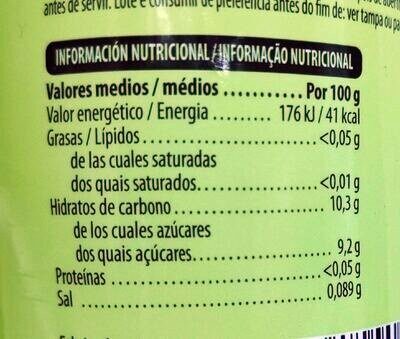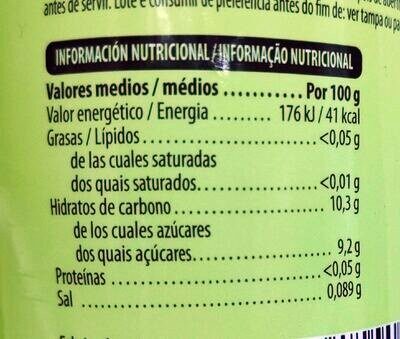Cocktail de mojito sin alcohol - Pi.omka - 700 ml
Aquesta pàgina del producte no està completa. Podeu ajudar a completar-la editant-la i afegint-hi més dades a partir de les fotos ja disponibles, o fent-ne més amb l'aplicació de androide o iPhone / iPad. Gràcies!
×
Codi de barres: 8480000284891 (EAN / EAN-13)
Nom comú: Bebida refrescante aromatizada para diluir, con azúcares y edulcorantes
Quantitat: 700 ml
Empaquetament:
en:Green dot, es:Botella cristal
Marques: Pi.omka
Categories: Begudes, Begudes ensucrades artificialment, Begudes sense alcohol
Etiquetes, certificacions, premis:
Lliure de gluten, Punt verd, en:May have an adverse effect on activity and attention in children, Sense alcohol, Amb edulcorants
Botigues: Mercadona
Països on es va vendre: Espanya
Matching with your preferences
Entorn
Empaquetament
Transport
Report a problem
Fonts de dades
Producte afegit per elcoco
Última modificació de la pàgina del producte per alia.
La pàgina del producte, també editada per acuario, allergies-app-chakib, elcoco.04b17ed802b3a4f5a26440250e34be64, kiliweb, musarana, openfoodfacts-contributors, packbot, pra, thaialagata, yuka.VkxrR0lhc2J0c1VGaE1JUjV3ejgxc3hMd2JxUlJqMk5LcnNNSWc9PQ, yuka.sY2b0xO6T85zoF3NwEKvlk9FdNjgsjvAajDlgFCU4s-QPsywQo527tn0bao, yuka.sY2b0xO6T85zoF3NwEKvlldtcvDVkyvYOxDvgxbS2daBCI3wTv9t_pDVHKo.










